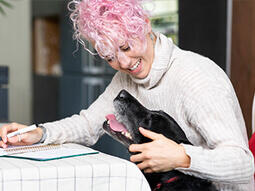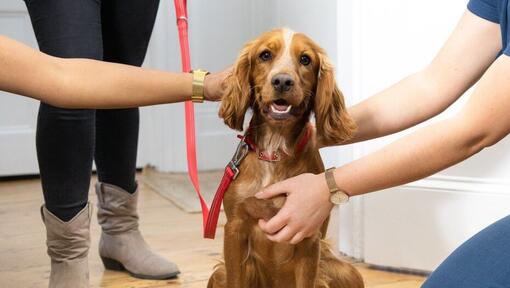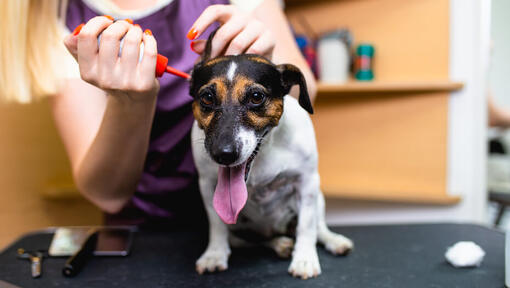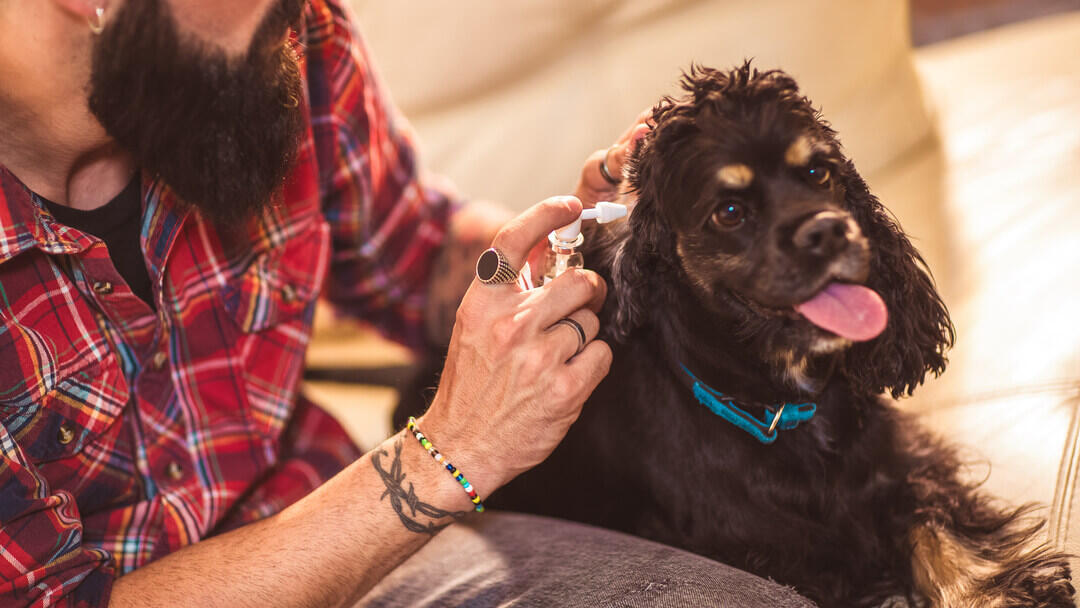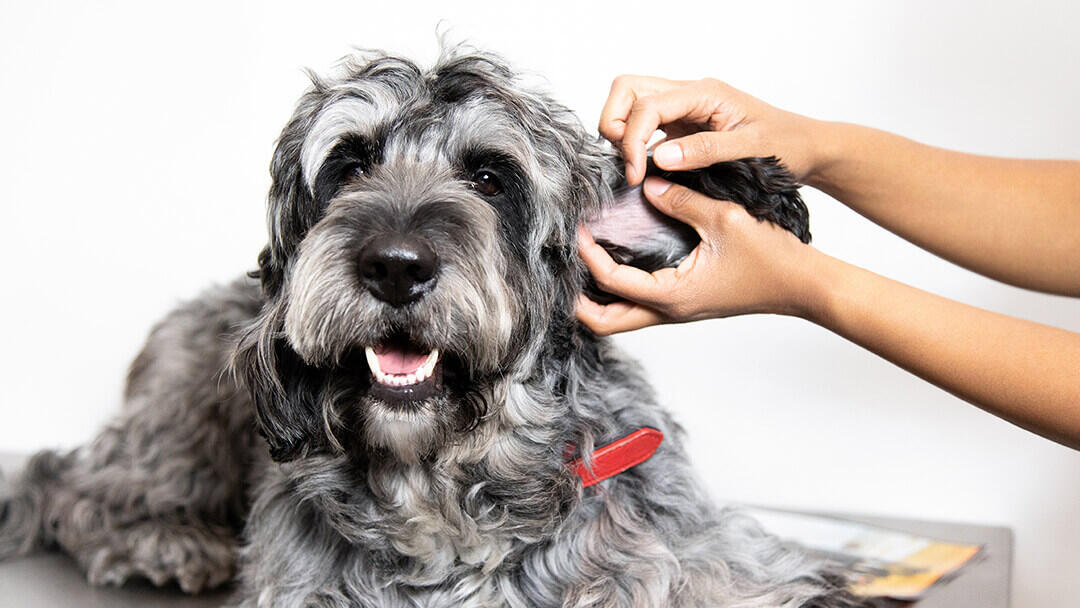Dog Ear Infections and Other Ear Problems: Symptoms, Causes & Treatment

Ear infections in dogs aren’t uncommon, but with the right care and treatment you can keep your dog’s ears nice and clean, and prevent further earache for both of you!
Dogs with stunning floppy ears are unfortunately the most prone to ear infections, but no dog is safe from this painful problem which can sometimes seem to appear out of the blue.
Keep reading our article to find out what are the signs of dog ear infection owners should look out for and why it’s important to contact the vet as soon as you notice them.
Symptoms of dog ear infections
Taking care of your dog’s ears should be a regular part of your grooming routine. Make a habit of checking them every time you brush your dog – and any time they’ve been running around the countryside. We have a handy guide on how to clean your dog’s ears if you’re wondering where to start.
Look out for any changes in your dog’s ear health; you know them best and will notice anything out of the ordinary. Here are some of the most common signs of ear infection:
- Any discharge from their ear (usually brown or green).
Redness.
Itchiness.
Unusual smells coming from their ears.
Scratching their ears frequently.
Shaking their head more than normal.
Holding their head to one side.
Rubbing one side of their face along the carpet or grass.
If you notice any potential symptoms of ear infection or ear discomfort in your dog, it’s best to take them to your vet for a thorough ear examination. As with most things, treatment is much easier and faster when issues are caught early. Severe ear problems and ear infections in dogs can have a more serious effect, such as loss of balance, which can be distressing for you both.
Bear in mind that balance loss may also be due to other causes, so always visit your vet for advice in such instances – that way you’ll know if something else is wrong.
Causes of dog ear infections and other ear problems
There are many reasons why ear problems in dogs might occur, and many include:
Infections due to bacteria.
Parasites such as ear mites.
Foreign bodies such as grass seeds.
Growths or tumours.
The shape of your dog’s internal ear can also add to the development of ear infections. Dogs have long ‘L’-shaped ear canals that easily trap dirt and moisture when they’re exploring the outdoors. Breeds with long, floppy ears or dogs that love to swim frequently are the most susceptible to ear problems, but it’s still common in many other breeds too. Often there’s nothing you can do to guarantee your dog won’t develop ear problems – but there are many ways to help.
Treating ear infections in dogs
Some ear infections in dogs can be treated relatively quickly and permanently, whilst others may need regular, intermittent treatment, or even long-term treatment.
In some cases, if your dog has skin problems then their ears will also be affected. Your vet will be able to examine your dog’s ears safely and advise on any tests or treatment that might be needed.
Do dog ear infections go away on their own?
It’s best to see a veterinarian as soon as you notice a potential ear infection. If it’s reached the stage where you’ve noticed symptoms, it is very unlikely to go away on its own and far more likely to get much worse.
Long term ear infections can cause changes to the structure of the ear canal which make it unlikely the ear will ever go back to normal and can predispose them to repeated infections. Untreated infections can also lead to more serious symptoms like balance or coordination issues. Ear infections are also painful and distressing so you will want to get help for your dog as soon as possible.
With the right treatment, your dog should see some relief almost immediately and improvement within 1-2 weeks, but it can take longer depending on the severity of the infection.
When should you take the dog to the vet for ear infection?
Ear infections can develop pretty quickly so it’s important to take your dog to the vet as soon as you notice any symptoms. Your vet will be able to do a check-up, look inside the ear through an otoscope, and recommend a suitable treatment.
Helping to prevent ear infections in dogs
To minimise the occurrence of ear infections in your dog, simply keep their ears clean and check them regularly for any signs of discharge or unusual odour.
If you have a beautiful long-eared breed, they’ll particularly benefit from regular ear cleaning with special ear cleaners and dog ear drops as recommended by your vet. Remember that as well as being one of their sharpest senses, the ear is a very delicate and sensitive area for dogs.
As the eardrum can be easily perforated, our PetCare experts recommend you never probe your dog’s ear canal with cotton buds. If you’re unsure, ask your vet how to use cotton balls and to recommend a suitable ear cleaner that won’t cause any skin irritation or dry out your dog’s ear too much.
For thinly-haired dogs or those with white-tipped ears, protect their ears in the summer and consider using doggy sun screen lotion to help prevent sun burn (which can lead to skin cancer).

